Chain Abstraction: Why Blockchain’s Biggest Problem Is That Users Know It Exists
Or: Why we’re still asking users to be their own IT department (and how that’s about to change)
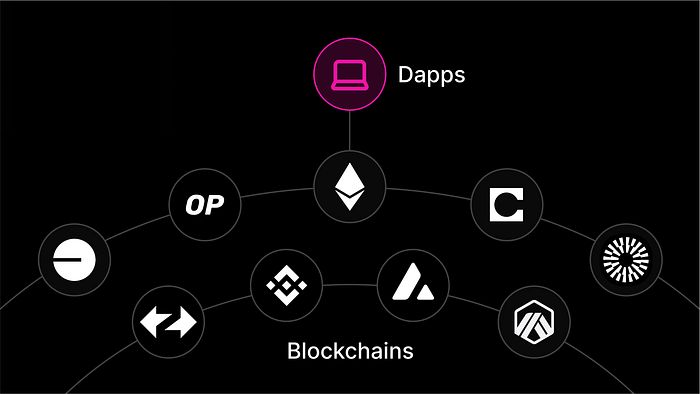
It's safe to say we're living in the blockchain equivalent of the 1990s internet, when using email required understanding SMTP servers, POP3 protocols, and manual configuration.Except worse… because at least email eventually figured out that users shouldn't need to be system administrators.
Blockchain hasn't learned that lesson yet. We're still asking people to manually switch between networks, understand gas tokens, bridge assets across chains, and troubleshoot failed transactions.
The solution isn’t better tutorials. It’s Chain Abstraction: making blockchain infrastructure completely invisible to end users.
It’s not simplifying it but hiding it entirely, the way Gmail hides SMTP.
I've read papers on chain abstraction extensively, and most conversations stay surface-level: Like, "Make crypto easier!" without explaining how, or what we're trading off to get there.
This is the essence of this article and extensively why we started ONCHAINJOURNALS.
Let’s explore this deeper.
---
THE PROBLEM: Infrastructure as User Interface
Let me start by describing what a typical user experience looks like when you want to use a decentralized application today.
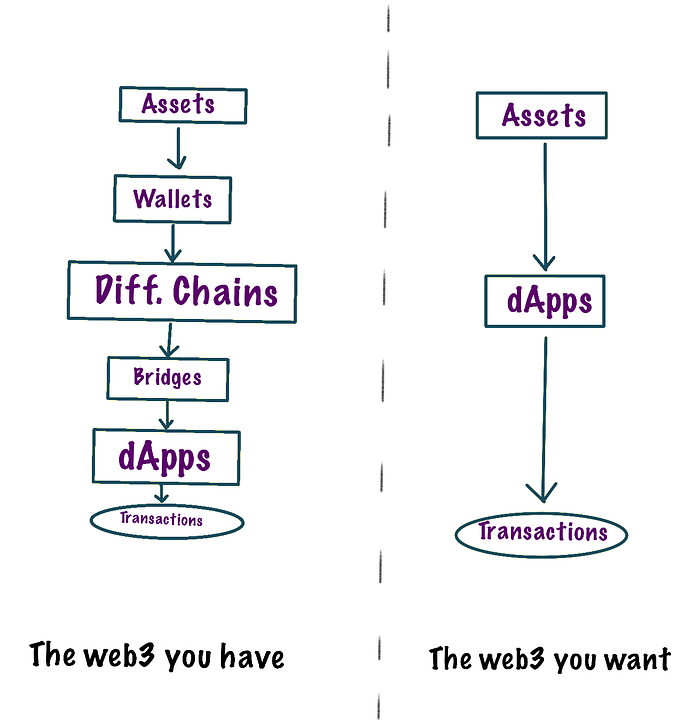
I started learning smart contract development at Updraft, thanks to their free course. I’m not yet technical… I began the course as part of my ecosystem exploration. During the walkthrough, which was genuinely excellent, I noticed something striking:
- The need for every onchain user to be aware of almost every step of any transaction they make.
This is what every Web3 user is subjected to.
The 12-Step Nightmare
Let’s say you’ve some USDT on Ethereum. You have a DeFi protocol on Base you’d want to interact with. Your wallet prompts you to switch networks. You dig through settings (if you even know where network settings are), find Base in the dropdown, approve the switch, reconnect your wallet. The app loads. You try to make a transaction. Error: insufficient ETH for gas. But you have ETH on Ethereum mainnet, not Base.
So now you need to bridge. You Google "bridge ETH to Base," find three different options with wildly different fee structures and security models, pick one hoping it's legitimate, connect your wallet again, approve token spending, pay gas on Ethereum, wait 10-15 minutes for confirmations, switch networks back to Base, verify your assets arrived, then finally, maybe, complete your original transaction.
If you're reading this thinking "that's not that complicated," you've been in crypto too long. To a normal person, this is incomprehensible. It's like being asked to manually configure TCP/IP settings every time you visit a different website.
The friction compounds in emerging markets. Try doing that 12-step process on a 3G connection in a region with intermittent power. Blockchain's complexity isn't just annoying for people with good infrastructure. It's completely exclusionary for people without it.
This is why most crypto and Web3 impact remains constrained. Not because people elsewhere don't need financial tools, but because the tools we built are functionally unusable under real-world conditions.
—
WHAT’S CHAIN ABSTRACTION ACTUALLY?
Chain abstraction means users interact with blockchain applications without knowing or caring which specific blockchain they're using.
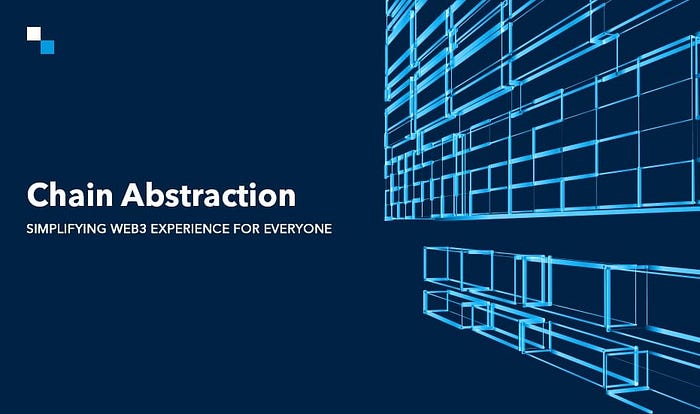
- It's what finally enables you to make transactions that complete automatically, without you managing every step, because routing, networks, bridges, and gas are all handled invisibly by infrastructure.
Think about how you use the internet. When you visit a website, you don't think about whether it's hosted on AWS, Google Cloud, or Microsoft Azure. You don't manually configure your connection based on hosting provider. The website loads, you interact with it, done.
The complexity exists, DNS resolution, packet routing, server-side rendering, etc but you never touch it.
Chain abstraction brings that same philosophy to blockchain. The underlying networks still exist. Ethereum, Solana, Base, Arbitrum, they're all still running, processing transactions, securing assets.
But from a user's perspective, they're as invisible as web hosting providers.
This isn’t "dumbing down" blockchain. It’s recognizing that infrastructure should never be user interface.
Making users manually manage blockchain networks was always a failure of design, not a necessary feature of decentralization.
—
HOW IT ACTUALLY WORKS: The Three Core Mechanisms
Chain abstraction isn't one technology, it's several converging approaches. Let me break down the key mechanisms making this possible.
1. Intent-Based Architecture
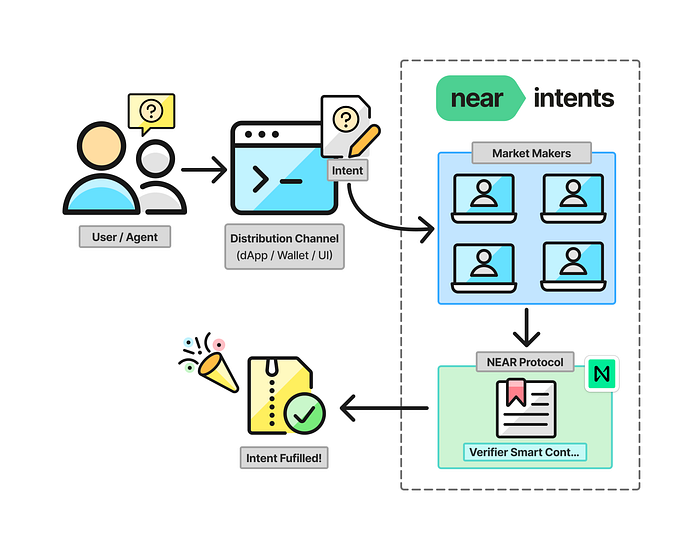
Current blockchain interactions are procedural. You specify every step: "Connect to Ethereum, call this contract function, approve this token, execute this swap, confirm transaction."
It's like giving your Uber driver turn-by-turn directions instead of just saying "airport."
Intent-based systems solve this by letting users declare an outcome: "I want native BTC swapped for ETH on Ethereum." The system, specifically a network of solvers, analyzes possible execution paths, selects the most efficient route across whatever chains are involved, and handles everything automatically.
Behind the scenes, that might involve: moving your BTC through a Lightning channel, bridging to a Bitcoin L2, wrapping into an ERC-20 token, routing through three different DEXs for optimal pricing, and delivering ETH to your specified address. From your perspective: one click, BTC becomes ETH, done.
- The critical insight here is that intents remove the need for users to understand execution mechanisms. You state desired end state, infrastructure figures out the path. This is the next evolution beyond just "abstracting chains"; it's abstracting the entire execution layer.
2. Chain Signatures
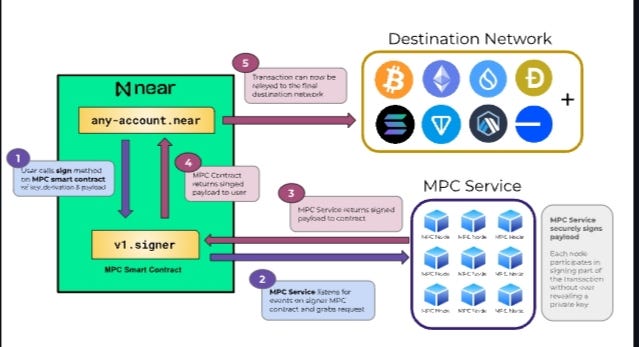
NEAR Protocol pioneered this approach: cryptographic signatures generated on NEAR that are valid on other chains. You hold keys on NEAR, but those keys can authorize transactions on Ethereum, Bitcoin, Solana, anywhere.
This matters because it eliminates the core problem of multi-chain asset management. You're not maintaining separate accounts on every chain. You're not bridging assets back and forth. Your account exists on NEAR, but it can interact with any blockchain natively.
In practice: You want to provide liquidity on Uniswap (Ethereum) and trade on Jupiter (Solana). Normally, that's two wallets, two sets of keys, constant asset shuffling between chains. With chain signatures, it's one account, interacting with both protocols directly. The chains don't need to communicate with each other—NEAR acts as the signing authority for both.
But there is a notable trade-off; You’re trusting NEAR’s security model. If NEAR’s validator set is compromised, your multi-chain access is at risk. That’s the centralization concern lurking under every abstraction solution – we’re trading distributed security for convenience.
3. Omnibridge Infrastructure
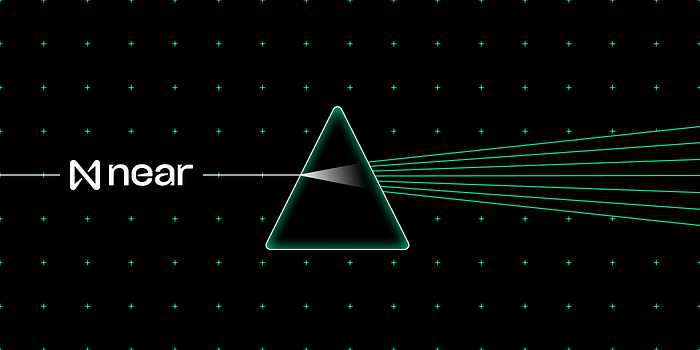
This is where things get technically interesting. Traditional bridges move assets from Chain A to Chain B by locking assets on A and minting wrapped versions on B. It works, but it's slow, expensive, and introduces wrapped token complexity.
Omnibridge approaches this differently by unifying liquidity pools that exist simultaneously across chains, with smart contracts managing assets and logic everywhere at once.
When you want to "move" value from Ethereum to Solana, you're not actually moving anything; rather, you're swapping from the Ethereum-side pool and receiving from the Solana-side pool, with the protocol handling balance reconciliation behind the scenes.
- Think of it like functional international banking. You have a Bank of America account in the US and need to pay someone in Europe. Your bank doesn't physically move dollars across the ocean. It debits your US account and credits the recipient's European account through the international banking network. Money doesn't travel; accounting does.
Omnibridge does the same thing for blockchain assets. Your balance isn't on a specific chain; it's accessible across all chains through unified liquidity infrastructure. Fast, efficient, and from a user's perspective, magical.
—
THE SOLUTIONS BUILDING THIS TODAY
Several projects are racing to make chain abstraction real. Each takes a different approach, with different trade-offs.
leads on intent and chain signatures. Their implementation lets one NEAR account control assets and execute transactions on Ethereum, Bitcoin, and any EVM-compatible chain.
It’s live, functional, and genuinely useful… though adoption is still early. The challenge: convincing developers and users to standardize on NEAR as their multi-chain identity layer.
is building universal accounts that exist across all chains natively. One balance, accessible everywhere. Their architecture is modular (separate layers for settlement, execution, and data availability) which gives flexibility but adds complexity. Strong technical team, ambitious vision, execution still being proven.
’s CCIP (Cross-Chain Interoperability Protocol) focuses on secure messaging between blockchains. Smart contracts on one chain can trigger actions on another, with Chainlink’s oracle network verifying everything. It’s not a complete abstraction solution on its own, but it’s critical infrastructure that other abstraction protocols build on top of. Battle-tested, widely adopted, conservative in scope.
is pushing intent-based architecture with solver networks that take user intents and find optimal execution paths across chains. They’ve been in development for several years and are approaching mainnet launch.
@Essential is newer, also focused on intent infrastructure, with a different technical approach, they’re in earlier stages but technically interesting.
The ecosystem is converging on intents + chain signatures + unified liquidity as the technical foundation. Which specific protocols win is less important than the fact that multiple credible teams are building compatible infrastructure. And that's how standards are emerging.
---
WHAT ARE THE TRADE OFF?
Chain abstraction sounds perfect until you ask: what are we sacrificing to get there?
Security centralization.
Every abstraction layer is a new dependency. If NEAR’s chain signatures are compromised, every application relying on them is vulnerable. If Chainlink’s CCIP oracles fail, cross-chain messages stop flowing. If a unified liquidity protocol is exploited, user funds across all chains are at risk.
We're replacing distributed blockchain security with centralized abstraction layer security. That might be the right trade-off for usability, but it's a trade-off nonetheless.
Infrastructure control.
Someone operates the solver networks. Someone maintains the cross-chain messaging infrastructure. Someone decides which chains get supported, how quickly, and under what conditions. As abstraction becomes standard, power concentrates at the infrastructure layer.
This isn't necessarily bad as every protocol stack has infrastructure layers, and they can be progressively decentralized over time. But let's not pretend chain abstraction doesn't introduce new centralization vectors.
Developer complexity is shifted, not eliminated.
From a user’s perspective, chain abstraction is magical. From a developer’s perspective, it’s just different complexity. Instead of managing multi-chain deployments yourself, you’re now integrating with abstraction protocols, understanding their APIs, trusting their uptime, debugging their edge cases.
For some teams, this is a huge improvement… infrastructure they don't have to build. For others, it's trading known complexity for unknown complexity with new failure modes they don't control.
The cost is never zero.
Abstraction infrastructure charges fees. Solver networks take spreads. Liquidity providers earn yields. Cross-chain operations always cost more than single-chain operations.
Chain abstraction hides this cost from users, but someone pays it and usually through slightly worse execution prices.
I'm not arguing these trade-offs are dealbreakers. I'm arguing we should be honest about them instead of pretending abstraction is costless magic.
---
But there’s another dimension to this that is almost not discussed on CT.
Africa’s Stake in This
Most chain abstraction conversations happen from a first-World perspective: fast internet, reliable power, strong financial infrastructure. From that vantage point, blockchain’s multi-chain complexity is annoying.
From an African perspective, it's exclusionary.
When switching blockchain networks requires stable internet for 2-5 minutes, that eliminates everyone dealing with spotty mobile connections. When bridges charge $5-15 in fees, that makes small-value transactions, remittances, microfinance, gig payments, economically impossible. When wallet interfaces assume technical literacy, that excludes everyone who isn't already technical.
Chain abstraction isn't just a UX improvement for places like Africa, it's an access enabler. Single-click interactions work on 3G. Fee abstraction makes small transactions viable. Invisible infrastructure means users don't need technical knowledge to participate.
The global financial system already excludes billions of people. If blockchain replicates that exclusion by making infrastructure complexity a prerequisite for access, we've failed the entire premise of decentralized finance.
Chain abstraction is how we avoid that failure. Not by lowering standards, but by raising infrastructure sophistication to the point where all users, not just technical early adopters, can participate without understanding the system's internals.
---
WHEN THIS ACTUALLY HAPPENS
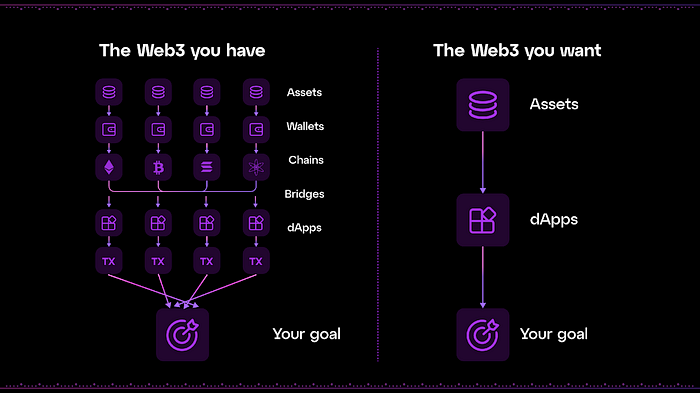
Full chain abstraction where users genuinely never think about blockchain networks isn't here yet. But the pieces are coming together faster than most people realize.
Right now; Chain signatures are live on NEAR. Chainlink CCIP is processing real cross-chain messages. Intent-based protocols are in testnet or early mainnet. Wallets are experimenting with abstraction features. The infrastructure exists, but adoption is scattered.
But in 5-10 years; Expect major abstraction protocols with real traction. Wallets integrate abstraction features natively. First waves of genuinely chain-agnostic applications launch where users don’t know or care which chain they’re on. Developers start building multi-chain by default.
- Chain abstraction is standard. New users onboard without learning what a blockchain network is. "Switch network" prompts become historical curiosity, like command-line interfaces. We look back at 2024-2025 and laugh at how primitive it was.
But this only happens if we commit to it. The technology exists. The research is done. What's missing is ecosystem-wide consensus that abstraction is non-negotiable for mainstream adoption, and willingness to prioritize user experience over developer convenience or ideological purity.
---
WHAT HAPPENS NEXT?
The blockchain industry has a choice.
We can keep building for ourselves. More chains, more bridges, more complexity, more tutorials explaining why users need to understand infrastructure. That path leads to permanent niche status of 50 million technically sophisticated users, forever.
Or
We can finally prioritize users over infrastructure. Hide the complexity we created. Make blockchain as easy as the internet. Meet people where they are instead of asking them to meet us where we are.
Chain abstraction is how we make that choice. It’s not a luxury feature for better UX. It’s survival. Because if blockchain remains too complicated for normal people to use, normal people will keep using traditional finance, and we’ll have built the future for nobody but ourselves.
The technology is ready. The question is whether we are.
If this article helped you understand chain abstraction, you’re exactly who I’m writing for.
I publish weekly deep dives on blockchain infrastructure that is technical enough for builders, accessible enough for anyone curious about how Web3 actually works.
What’s next?
I recommend you follow our page and stay updated with our content head via;
- Twitter: @IfiokEdet_
- and follow us here on Medium to be the first to read our Sunday deep dives.
“Trying to make blockchain make sense. One article at a time”
Listen To The Article

Black Friday 30%
Offer









